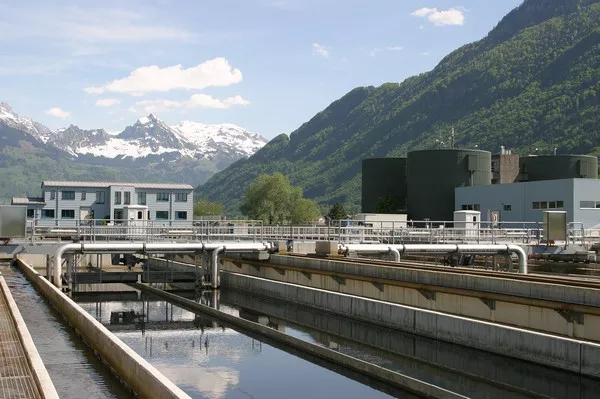Sewage treatment is a crucial aspect of urban infrastructure that plays a pivotal role in maintaining public health and environmental sustainability. As populations continue to grow, the need for effective sewage treatment becomes increasingly vital. There are two primary types of sewage treatment plants – biological and physical/chemical. Each type employs distinct processes to purify wastewater and mitigate the environmental impact of human activities. In this article, we will delve into the intricacies of these two sewage treatment plant types, exploring their mechanisms, advantages, and limitations.
Biological Sewage Treatment Plants
Biological sewage treatment plants harness the power of microorganisms to break down organic pollutants in wastewater. This type of treatment relies on the natural processes of microbial digestion and is widely recognized for its cost-effectiveness and environmental friendliness. There are two main categories within biological sewage treatment – aerobic and anaerobic.
Aerobic Biological Treatment
Aerobic treatment involves exposing wastewater to oxygen, creating an environment conducive to aerobic bacteria and other microorganisms. These microorganisms consume organic matter, transforming it into carbon dioxide, water, and biomass. The most common method of aerobic treatment is the activated sludge process, where microorganisms are suspended in the wastewater and continuously agitated to encourage microbial growth and pollutant breakdown.
One of the significant advantages of aerobic biological treatment is its efficiency in removing organic pollutants and pathogens. The process results in clear and odorless effluent, suitable for discharge into water bodies or reuse in certain applications. However, these systems typically require higher energy inputs for aeration, making them more operationally demanding than their anaerobic counterparts.
Anaerobic Biological Treatment
In contrast to aerobic treatment, anaerobic biological treatment occurs in the absence of oxygen. Anaerobic bacteria break down organic matter, producing biogas (methane and carbon dioxide) and biomass as byproducts. Anaerobic digestion is a well-established process in wastewater treatment, with applications ranging from municipal sewage to industrial effluents.
Anaerobic treatment plants are often favored for their lower energy requirements and the potential for energy recovery through biogas utilization. These systems are particularly effective in handling high-strength industrial wastewater, but they may have limitations in terms of pathogen removal and the quality of the effluent produced.
Physical/Chemical Sewage Treatment Plants
Physical/chemical sewage treatment plants, as the name suggests, rely on physical and chemical processes to remove pollutants from wastewater. These processes involve the use of various chemicals, coagulants, and physical separation methods to treat sewage effectively.
Primary Treatment
The first stage of physical/chemical treatment is primary treatment, which involves the physical removal of large solids from wastewater. In primary sedimentation tanks, heavy particles settle to the bottom, forming sludge, while floating materials are skimmed off the surface. This process significantly reduces the organic load in the wastewater before it undergoes further treatment.
Primary treatment is effective in removing up to 30% of suspended solids and a significant portion of organic matter. However, it does not address dissolved pollutants or pathogens, making secondary treatment necessary for comprehensive sewage purification.
Secondary Treatment
Secondary treatment in physical/chemical sewage treatment plants focuses on the biological removal of dissolved and colloidal organic matter remaining after primary treatment. This is often achieved through biological processes, such as trickling filters or biofilm reactors, where microorganisms attach to surfaces and break down organic pollutants.
While physical/chemical treatment plants may require less land and have lower operational costs compared to biological systems, they often demand a higher initial investment due to the need for chemical additives and equipment. Additionally, the residual sludge produced during these processes requires proper management to prevent environmental harm.
Comparative Analysis
Both biological and physical/chemical sewage treatment plants have their merits and limitations, and the choice between them depends on factors such as the scale of the facility, available resources, and the characteristics of the influent wastewater.
Biological treatment plants are often preferred for municipal sewage treatment due to their ability to produce high-quality effluent suitable for discharge into natural water bodies. These systems are environmentally friendly and offer the potential for energy recovery, although they may require more extensive land areas and higher energy inputs in some cases.
On the other hand, physical/chemical treatment plants are well-suited for industrial wastewater with high pollutant concentrations. They are efficient in reducing suspended solids and certain chemical constituents but may fall short in addressing dissolved pollutants and pathogens. The use of chemicals in these treatment processes raises concerns about the environmental impact and the need for proper disposal or recycling.
See Also How Is Sludge Treated In A Wastewater Treatment Plant
Conclusion
In conclusion, the two types of sewage treatment plants – biological and physical/chemical – represent distinct approaches to addressing the growing challenges of wastewater management. While biological treatment harnesses the power of microorganisms to naturally purify sewage, physical/chemical treatment relies on chemical and physical processes for effective pollutant removal. The choice between these methods depends on various factors, including the nature of the wastewater, available resources, and environmental considerations.
As technology continues to advance, there is an ongoing quest to develop hybrid treatment systems that combine the strengths of both biological and physical/chemical processes. Regardless of the chosen method, the ultimate goal of sewage treatment remains the protection of public health, preservation of the environment, and the sustainable management of water resources for future generations.

